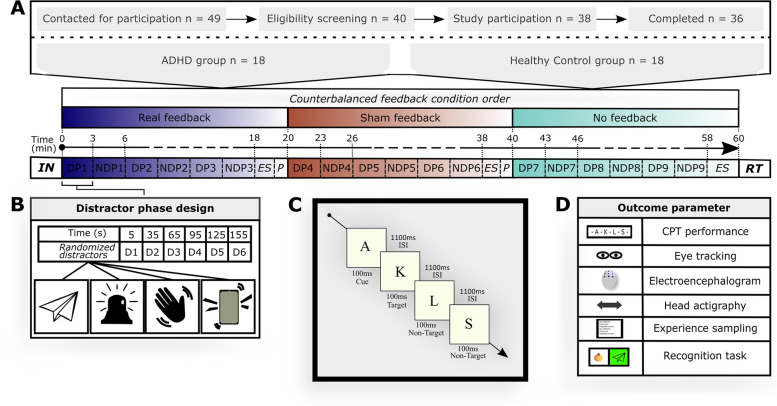Fig. 2.
Participant flow and experimental design. A 36 participants underwent all three feedback conditions in counterbalanced order on experiment Day 2. First, instructions were shown and a short continuous performance task (CPT) trial block was run. Then, the task block started, combined with either the real feedback, sham feedback, or no feedback. Following each 18-min CPT block, participants underwent experience sampling (ES) and a short break (P). Within each feedback block, time phases with distracting events (DP) and phases without distracting events (NDP) were alternated in three-minute cycles. At the end of the experiment, the VRSQ was completed and a recognition task (RT) regarding presented distractors was conducted. B Distractor phase design. Audio, visual, or audiovisual distractors were presented every 30 s during DP. C Implementation of the CPT. The CPT was presented on a canvas with a stimulus interval of 100 ms and an interstimulus interval of 1100 ms. D Outcome parameters of the study. Abbreviations: ADHD: Attention-deficit/hyperactivity disorder, ES: Experience sampling, D: Distractor, DP: Distractor phase, HC: Healthy control, ISI: Interstimulus interval, NDP: Non-distractor phase, P: Pause, RT: Recognition task, VRSQ: Virtual Reality Sickness Questionnaire

